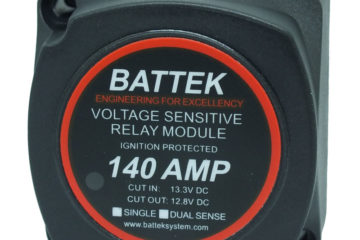A Relay-based Isolator have no apparent voltage drop while for Diode-based Isolator there will be minimally 0.7V – 1.5V drop across the diode depending on the amount of current pass through. The higher the current, the bigger the voltage drop and the lower the efficiency of charging the dual battery.
Relay-based Isolator is best seen as switch that can direct current, enabling primary and auxiliary bank of batteries to be charged from a single source, using a solenoid. When the engine starter is engaged, the Relay-based Isolator compares the voltage in both main and auxiliary batteries. If the Relay-based Isolator determines that there’s not enough voltage in the primary source to perform an essential function, such as starting an engine, it will open the solenoid and allow current to flow from the auxiliary battery to make up the difference. However, if the drain on the charging system by the auxiliary or main battery bank reduces the system voltage below a certain point, it will disconnect the battery banks from each other, protecting them from excessive drain.
Thus, in most of the scenarios, Relay-based Isolator is the preferred choice for Dual Battery Applications involving battery banks of at least one Main Battery and one Auxiliary Battery.



2 Comments
Osvaldo Benya · 6th January 2019 at 7:24 am
In your post it states that the Led light strips with tape on can still be used once Cut. I cut 1 inch off and tryed to find wires in it. Could nit find any at all as how could I use this long led strip or is it no good?
batteksystem · 8th January 2019 at 12:31 pm
Dual Battery System can be used with LED strip system. Just make sure the voltage is compatible, and it is protected from the power transient.
Comments are closed.